Accessing Organic, Healthy Food in Weinland Park
The food environment of Weinland Park is in desperate need of improvement. This area is a borderline food desert with local access to healthy food being extremely limited. The saving grace of this unfortunate situation is the neighborhood Kroger on North High Street. This Kroger is a fabulous and financially successful store, with an abundance of healthy food for purchase. However, the greatest problem for the Weinland Park community is ease of access. If every resident in Weinland Park owned a car, then getting to the Kroger would be simple and convenient. However, many residents do not own vehicles and need to walk. This can be especially burdensome if the resident is disabled, in poor health, or of significant age. This also would be problematic in the winter due to the obvious – slippery sidewalks. There is also the dilemma of transporting the purchased groceries home when on foot. Even for those residents who can utilize public transportation (such as the COTA bus), there is still an issue of travel distance as the Kroger lies on the most western border of the Weinland Park district boundary.
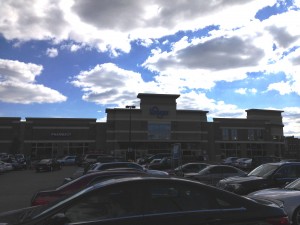



The Community Speaks:
The Urban Avengers conducted interviews in the Weinland Park district regarding local food access.
- Ervin, a 54-year old male who lives in Weinland Park (but did not disclose his address) was observed walking to the Kroger with the aid of a walker. Ervin visits Kroger at least 3 times per week (always by walking). He makes numerous trips because he purchases small amounts of groceries per visit due to the issue of carrying them home while using his walker. He does feel the effects of limited access.
- Eighty-year old “Bliss”, a male residing alone on 9th Avenue, near Grant Ave. does all of his own food shopping at the Kroger on High Street. He drives himself to the Kroger and feels satisfied with the access at this time. He noted to us that of course, should he become unable to drive himself, access will become a problem.
Local Markets In Place in Weinland Park:
The Urban Avengers conducted a location research survey in the Weinland Park area and located six local convenience type stores.
- Natalia’s on Summit Street at E. 6th – this corner store is not an option for healthy food access. Natalia’s has a very large selection of beer, cigarettes, candy and snack foods (chips, cookies, etc.) There was one small freezer near the cash register containing a hodgepodge of frozen foods which were a variety known to be sold at Aldi grocery stores. It seemed obvious that the owner had purchased these frozen foods at Aldi and was reselling them at a mark-up.
- East Village on Chittenden near 4th Street – this store is fairly new and seems to cater largely to the OSU campus crowd. The focus of this store is beer and snack type foods.
- North 4th Fish n Chips and Carry Out (at 4th and 11th). This store was not entered by anyone in the group but an assumption is made that they do in fact, make and sell fried fish and French fries. The additional assumption is that there would also be the sale of beer, cigarettes and junk food.
- Star Carry Out at 1565 North 4th Street near Chittenden. This store did not appear to be open on Sunday, the day of our neighborhood survey.
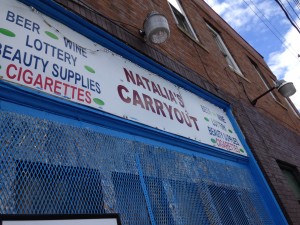





Additionally, there are two Marathon gas station/convenience stores located within one block of each other on Summit Street (one at the corner of Summit and Chittenden and the other at the corner of Summit and 11th Avenue). Both are owned by the same Sudanese family. One of the owners spoke to us stating that the logic of owning two locations so close in proximity is that you “hit traffic going in both directions, due to the one way streets.” When asked if they carried, in either location, any healthy food, the owner laughed and asked “Where in America do you see healthy food?? You must grow healthy food from the ground up.” Indeed, kind Sir, indeed.



In addition to the lack of healthy food alternatives, the basic fundamentals of the environment also contribute to the access problems. This area is known to be high crime and the carry out/markets throughout the district are protected with massive steel bars which demonstrates the lack of safety and trust felt by the storeowners. This invokes fear in the residents (and visitors) to even step inside – not exactly the place for women or children to feel secure stopping in for a gallon of milk. The traffic is extremely busy on the main thoroughfares – Summit Street, 4th Street, 11th Avenue and 5th Avenue. The traffic issue also plays a role in access to the 4th Street Farm due to the volume and high speed of vehicles on 4th Street – the danger in crossing the street is not conducive to the children and families living on the opposite side of 4th Street. Pedestrian safety is of great concern in these high volume traffic areas.
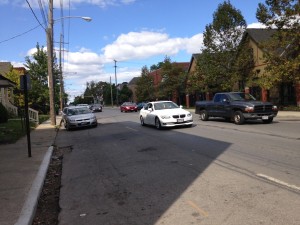
How Does Your Garden Grow?. . .
The beginning of our journey began at the 4th Street Farm, which according to its founder, Woody, was started approximately 4 years ago. The concept is a great one, and Woody’s passion is evident. It is uncertain as to the actual involvement of the community as the organic food growing areas did seem a bit neglected. And if the people aren’t coming in, then the produce is likely not going out, therefore unfortunately, the fresh produce is being wasted.
That same concern is felt for the other two community gardens we located – Indianola Community Garden on Indianola at Euclid Avenue and also the Arawak Community Garden located just a block or two from the 4th Street Farm, also on 4th Street. Both of these gardens also appeared neglected and therefore, not truly benefiting community members with FREE healthy eating options.
Neither of the two gentleman interviewed (remember Bliss and Ervin?) even knew about the community gardens, or that they are welcome to enjoy the fruit and produce as a community member!
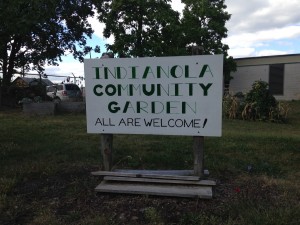


Where Do We Go From Here?
The Urban Avengers feel that the Weinland Park Community Civic Association is definitely on the right track with not only the implementation of the local community gardens, but also the structure already in place with several civic committees to assist in addressing these issues. Resident-led committees such as the Food and Wellness Committee, the Land Use and Business Development Committee, as well as the Safety and Mobility Committee. Kudos to the WPCCA for caring about its residents and taking strides to improve their quality of life!
The Urban Avengers, in that same framework of community importance, would like to make the following recommendations to the WPCCA for a healthier community:
Grab the attention of your district’s youth and make it fun for them to be involved in the community gardens! Statistics show that if a child actually grows a food themselves, they are more likely to enjoy eating it.

One way to gain involvement would be to invite the “Sol Food Mobile Farm” to Weinland Park. On the PBS television show, “Growing a Greener Garden”, Episode 325 featured the “Sol Food Mobile Farm.” Four young professionals who grew up together in Durham, North Carolina began the Sol Food Mobile Farm in 2012 and are traveling across the United States (in an old school bus transformed into a mobile, self-sufficient farm where they also sleep and eat) to visit community farms, educate and inform the community (focusing on children) on the benefits of having a community garden. Please visit the provided link to learn more about Sol Food and how to request a visit: http://www.growingagreenerworld.com/episode325/
Another recommendation is to place an alternate grocery store on the “other side” of Weinland Park. Our idea specifically calls for placement of an Aldi Grocery Store on either the northwest corner of 5th Avenue and Summit Street or 5th Avenue and 4th Street. There are currently abandoned buildings and/or vacant lots at both locations that could become part of a gentrification project to further revitalize the Weinland Park area. Either site could be demolished and turned into a successful, easily accessible, affordable grocery alternative. Aldi Stores are extremely affordable and are known for their affordable and desirable produce sections. While there is currently an Aldi Grocery approximately three miles away at Silver Driver and I-71 – that location largely serves the Linden area, and is still not easily accessible to the Weinland Park residents.

Corner of 5th Avenue and 4th Street



Corner of 5th and Summit St
The Weinland Park community is full of life-long residents as well as new families and young professionals. The area has seen tremendous growth in the past few years and the outlook for continued growth is most certain. In the essence of continuing to serve your community with healthier alternatives, please consider the recommendations given by the Urban Avengers. We thank you for allowing us to explore your neighborhood!

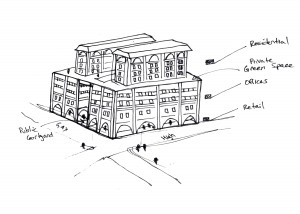

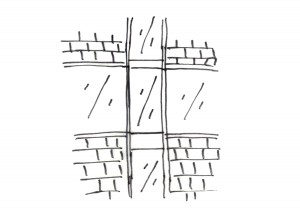



 The area of the food environment study is the space shown above. Throughout the area, there a couple busy one-way streets, some small roads, and worn-out alley ways. There are adequate bus stops along the main roads, however those living further away from the roads would have to walk a bit to a stop. This could be dangerous at night, as lighting is scattered and only on one side of the busier streets. Alley ways and small roads have no lights at all.
The area of the food environment study is the space shown above. Throughout the area, there a couple busy one-way streets, some small roads, and worn-out alley ways. There are adequate bus stops along the main roads, however those living further away from the roads would have to walk a bit to a stop. This could be dangerous at night, as lighting is scattered and only on one side of the busier streets. Alley ways and small roads have no lights at all.









































![20150917_162617[1]](https://u.osu.edu/cannon.212/files/2015/09/20150917_1626171-2gevkvf-300x169.jpg)







![IMG_20150920_192701[1]](https://u.osu.edu/crp2110/files/2015/09/IMG_20150920_1927011-28auhlk-169x300.jpg)

![IMG_20150920_192655[1]](https://u.osu.edu/crp2110/files/2015/09/IMG_20150920_1926551-2gwzwyx-300x225.jpg)
![IMG_20150920_192718[1]](https://u.osu.edu/crp2110/files/2015/09/IMG_20150920_1927181-262gw65-169x300.jpg)
![IMG_20150920_192710[1]](https://u.osu.edu/crp2110/files/2015/09/IMG_20150920_1927101-si1glq-225x300.jpg)
![IMG_20150920_211045[1]](https://u.osu.edu/crp2110/files/2015/09/IMG_20150920_2110451-2a6td66-e1442798202709-300x169.jpg)
![IMG_20150920_211037[1]](https://u.osu.edu/crp2110/files/2015/09/IMG_20150920_2110371-2jorlvq-e1442798183924-300x169.jpg)
![IMG_20150920_211053[1]](https://u.osu.edu/crp2110/files/2015/09/IMG_20150920_2110531-oqd789-e1442798039331-300x169.jpg)